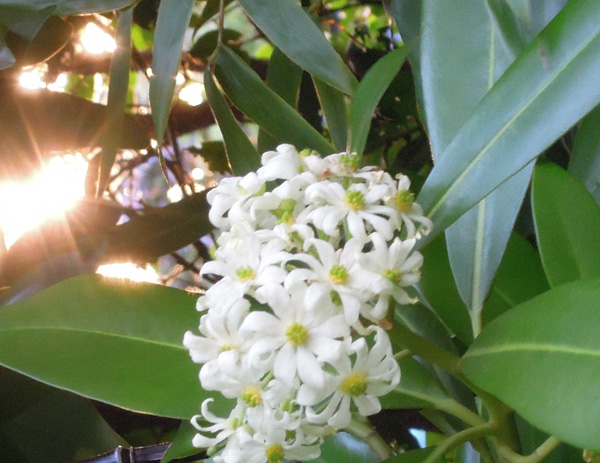Choice Plants from Chelsea

Yesterday saw Painted Fern’s annual pilgrimage to the Chelsea Flower Show. Many of the designers opted for much loved stalwarts of the garden such as Lupins, Geums and Aquilegias with Paeonies featuring heavily too. All the gardens looked amazing, but I’ve picked out a few of my favourite plant choices used at the show, to highlight some of the ones that may escape the armchair viewer at homes notice.
Chris Beardshaw opted for
Styrax japonicas on The Morgan Stanley Garden for the NSPCC, a deciduous dainty tree perfect for the smaller garden, providing you have acid soil of course. Its common name of Japanese Snowbell gives a hint to its pure white bell-like flowers which hang down from the horizontal branches in late spring and early summer. Sadly this wasn’t out in flower yesterday so was probably overlooked by most admiring its neighbour
Enkianthus campanulatus, which is of course equal in beauty.
Lupins, Lupins everywhere, but let’s look closer. Are you sure they are all Lupins? Baptisias from North America have been increasing in popularity in the last few years. New hybrids are coming on the market and a definite creep of them,
Baptisia australis included, featured on several of the show gardens like the Urban Flow Garden designed by Tony Woods which won both a Gold medal and Best Space to Grow Garden. These long lived perennials do take a while to settle in and consideration must be given to their position as they resent being moved due to their deep taproot, but of course this does make them tolerant of periods of drought when established. Tall stems of indigo-blue pea-like flowers appear in June above neat foliage before forming decorative black seedheads that last through the autumn. I think I would always opt for Baptisia over Lupin any day as they are less susceptible to pests and diseases, but patience is needed in the beginning.
Drimys winteri did attract some attention on The CHERUB HIV garden: A Life Without Walls designed by Naomi Ferrett-Cohen. A cluster of these evergreen trees were used around the open seating area, not that you could really call them a tree on the garden as they were so juvenile. I’m trying to think back to when I planted the one in my front garden, oh so many years ago. It’s now a fantastic standard tree about 12 foot high and has scented star-like creamy flowers on it at the moment (the one in the photo). A mahogany coloured bark develops with maturity. Definitely one for growing in warmer gardens in the south of England only though.
Pseudopanax seemed to be everywhere this year. Great I say. These poor plants have been around since pre-historic times and are still waiting for their moment. Architectural Plants used them on their collaboration with Blue Forest Luxury Treehouses; Crug Farm Plants on their stand in the plant marquee; but the best way of showing how to integrate some of these ‘rather odd’ looking plants was on the VTB Capital Garden – Spirit of Cornwall designed by Stuart Charles Towner with Studio Evans Lane. This is a contemporary garden style with good contrast of foliage and texture. The
Pseudopanax crassifolius is featured in its juvenile form on the garden, which can last for about 15 years. Difficult to describe, but I’ll give it a go. Stiff, narrow toothed leaves with a central midrib held at 45 degree angles are produced from a single stem, not that dissimilar to a Christmas tree having lost all its needles, but with the branches pointing the other way. Am I selling it to you? In the mature form the stem starts to branch to produce a bushy top looking nothing like its former self. It is thought this odd behaviour developed as a form of protection against attack from the flightless moa bird.
Disporum longistylum ‘Night Heron’, an introduction by renowned plantsman Dan Hinkley, is the last of my unusual picks. This is a fantastic way of adding height to shadier areas. With its dark bamboo like stems up to 1 metre high dressed with even darker foliage which changes to green as the season progresses. Creamy bell shaped flowers are present in spring. This was used on the design by Tom Stuart-Smith for The Weston Garden to celebrate the 60
th anniversary of The Garfield Weston Foundation. My own plant of this is establishing, but alas hasn’t attained the height yet, but certainly makes up for it in intensity of foliage. Still I will get to gaze longingly on Friday at the full height specimens when I am back at Chelsea as garden host for Crocus on this very beautiful garden.